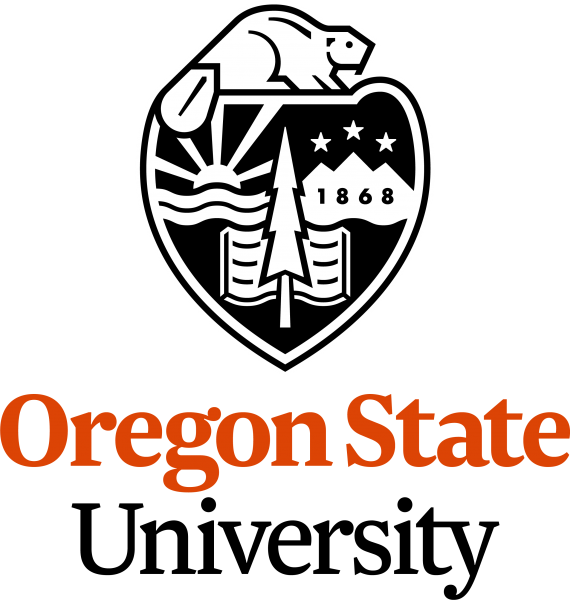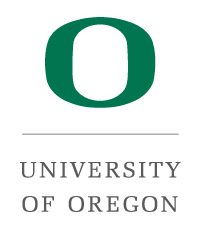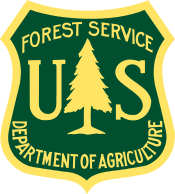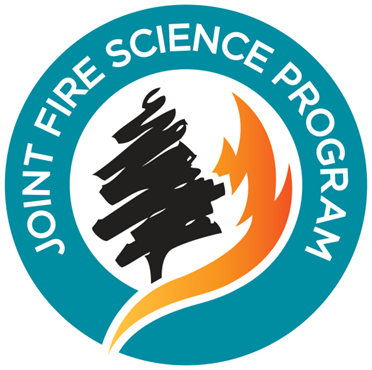InciWeb Articles & Incidents for Washington and Oregon
Colville NF North Star Post-Fire BAER Assessment Report Released (2015 Colville NF Post-Fire BAER Burned Area Emergency Response)
Colville NF North Star Post-Fire BAER Assessment Report Released The Colville National Forest received $117,426 for emergency land stabilization measures on federal lands burned by the North Star wildfire. The emergency treatments and activities are designed to decrease possible impacts to downstream values-at-risk from the burned area such as: human health and safety, road and trail infrastructure, water quality, soil productivity, critical cultural resources, and the spread of noxious weeds. NOTE: Attached as a PDF document to this article is the BAER Assessment Team's emergency stabilization report (see right side for the “Colville NF North Star Post-Fire BAER 2500-8 Report” in PDF format).
Kaniksu Complex Post-Fire BAER Soil Burn Severity Maps Released (2015 Colville NF Post-Fire BAER Burned Area Emergency Response)
KANIKSU COMPLEX: TOWER, BALDY, & GREASE CREEK POST-FIRE BAER SOIL BURN SEVERITY MAPS RELEASED Burned Area Emergency Response (BAER) specialists recently completed their data gathering and verification field work for the 6,700 acres of the Kaniksu Complex (Tower, Baldy and Grease Creek Fires) that burned on the Colville National Forest (NF), 12,100 acres that burned on the Idaho Panhandle National Forests, and finalized Soil Burn Severity maps for each of the three Kaniksu Complex fires. Also burned in the Tower Fire were approximately 4,900 acres of private and 2,200 acres of Washington State lands. BAER soil burn severity mapping levels are 1) Unburned/Very Low, 2) Low, 3) Moderate, and 4) High. The maps show that approximately: 57% of the 24,700 acres analyzed by the BAER team within the fire perimeters of the Tower Fire are either unburned or have a low soil burn severity, while 34% sustained a moderate soil burn severity and 9% received a high soil burn...
Renner & Graves Mountain Post-Fire BAER Soil Burn Severity Maps Released (2015 Colville NF Post-Fire BAER Burned Area Emergency Response)
RENNER & GRAVES MOUNTAIN POST-FIRE BAER SOIL BURN SEVERITY MAPS RELEASED Burned Area Emergency Response (BAER) specialists recently completed their data gathering and verification field work in the Renner Fire and Graves Mountain Fire burn areas that burned on the Colville National Forest (NF), and finalized a Soil Burn Severity map. The Renner and Graves Mountain fires were part of the Kettle Complex of wildfires. BAER soil burn severity mapping levels are 1) Unburned/Very Low, 2) Low, 3) Moderate, and 4) High. The map shows that approximately 87% of the 13,800 acres analyzed by the BAER team within the fire perimeters of the Renner Fire are either unburned or have a low soil burn severity, while 13% sustained a moderate soil burn severity and less than 1% received a high soil burn severity; and 82% of the 8,600 acres analyzed by the BAER team within the fire perimeters of the Graves Mountain Fire are either unburned or have a low soil burn severity, while...
Colville NF North Star Post-Fire BAER Soil Burn Serverity Map Released (2015 Colville NF Post-Fire BAER Burned Area Emergency Response)
NORTH STAR POST-FIRE BAER SOIL BURN SEVERITY MAP RELEASED BAER specialists recently completed their data gathering and verification field work for the 18,000 acres of the North Star Fire that burned on the Colville National Forest (NF) and the 27,000 acres that burned on the Okanogan-Wenatchee National Forest, and finalized a Soil Burn Severity map. Soil Burn Severity mapping levels are 1) Unburned/Very Low, 2) Low, 3) Moderate, and 4) High. The map shows that approximately 58% of the 43,000 acres analyzed by the BAER team within the fire perimeters of the North Star Fire are either unburned or have a low soil burn severity, while 32% sustained a moderate soil burn severity and 10% received a high soil burn severity. The BAER assessment team used the map and field assessments to estimate potential impacts to human life, safety, and property from storm events and considered emergency stabilization options for those critical resources. BAER team leader...
Colville NF Post-Fire BAER Assessment & Implementation Efforts (2015 Colville NF Post-Fire BAER Burned Area Emergency Response)
COLVILLE NF POST-FIRE BAER ASSESSMENT & IMPLEMENTATION EFFORTS Before the 2015 wildfires burning on the Colville National Forest (NF) were fully contained, Burned Area Emergency Response (BAER) assessment teams were established by the forest to analyze post-fire conditions of the burned watersheds for the following wildfires: - Kettle Complex (Stickpin Fire, Renner Fire, and Graves Mountain Fire) - Northstar Fire (18,000 acres burned Colville NF lands)- Kaniksu Complex (Tower Fire, Grease Creek Fire, Baldy Fire) BAER assessments analyze post-fire effects on the burned soils and watersheds and determine whether there are potential emergency threats and impacts to potential downstream values-at-risk related to human life and safety, property and infrastructure such as roads, trails, and campgrounds, natural resources such as soil productivity, water quality and critical plant and wildlife habitat, and cultural resources. Wildfires can increase the risk...
BAER Limitations (2015 Colville NF Post-Fire BAER Burned Area Emergency Response)
Burned Area Emergency Response (BAER) Limitations While many wildfires cause minimal damage to the land and pose few threats to the land or people downstream, some fires result in damage that requires special efforts to reduce impacts afterwards. Loss of vegetation exposes soil to erosion; water run-off may increase and cause flooding, soil and rock may move downstream and damage property or fill reservoirs putting community water supplies and endangered species at-risk. The Burned Area Emergency Response (BAER) program is designed to identify and manage potential risks to resources on National Forest System lands and reduce these threats through appropriate emergency measures to protect human life and safety, property, and critical natural or cultural resources. BAER is an emergency program for stabilization work that involves time-critical activities to be completed before the first damaging storm event to meet program objectives. BAER Objectives: ...
Key Elements of the BAER Assessment (2015 Colville NF Post-Fire BAER Burned Area Emergency Response)
KEY ELEMENTS OF THE BAER ASSESSMENT Forest Service BAER assessment teams are established by Forest Supervisors before wildfires are fully contained. The teams coordinate and work with the USDA Natural Resources Conservation Service (NRCS), Bureau of Land Management (BLM), Fish & Wildlife Service (FWS), National Weather Service (NWS), local counties, California Department of Transportation, and other federal, state, and local agencies to strategically assess potential post-fire impacts to the watersheds burned from wildland fires. - The BAER assessment teams are evaluating watershed conditions to determine the level of potential risks to human life, safety, property, natural and cultural-heritage resources, and determine if there are appropriate and effective emergency stabilization measures that can be implemented on federal lands in a timely manner to reduce unacceptable risks from potential flooding and debris flow threats. - The BAER assessment team conducts field...
Stickpin Post-Fire BAER Assessment Report Summary (2015 Colville NF Post-Fire BAER Burned Area Emergency Response)
STICKPIN POST-FIRE BAER ASSESSMENT REPORT SUMMARY FS-2500-8 Burned-Area Report: Watershed Analysis, Condition, and Response The Stickpin Fire was reported on August 11, 2015, and burned about 53,950 acres along the Kettle Crest between Curlew and Orient communities. Hot, windy conditions combined with very dry fuels caused the fire to grow quickly. Stickpin Fire is the largest fire of the Kettle Complex which also includes the Renner Fire and Graves Mountain Fire. Approximately 48,500 acres burned on the Coleville National Forest. The remaining acres burned on state and private lands. A Forest Service (FS) Burned-Area Report, which included the BAER assessment team’s analysis of the burned areas within the Stickpin Fire and recommended emergency treatments, was recently submitted to the Pacific Northwest Region and its Washington Office by the Forest Supervisor for the Colville National Forest: - 8 sub-watersheds were analyzed and modeled to compare...
Stickpin Post-Fire BAER Soil Burn Severity Map Released (2015 Colville NF Post-Fire BAER Burned Area Emergency Response)
STICKPIN POST-FIRE BAER SOIL BURN SEVERITY MAP RELEASED BAER specialists recently completed their data gathering and verification field work in the Stickpin Fire burn areas and finalized a Soil Burn Severity map. Soil Burn Severity grid mapping codes are 1=Unburned/Very Low, 2=Low, 3=Moderate, and 4=High. The map shows that approximately 46% of the 53,950 acres analyzed by the BAER team within the fire perimeters of the Stickpin Fire are either unburned or have a low soil burn severity, while 24% sustained a moderate soil burn severity and 30% received a high soil burn severity. The BAER assessment team used the map and field assessments to estimate potential impacts to human life, safety, and property from storm events and considered emergency stabilization options for those critical resources. BAER team leader John Chatel stated, "The high severity burned watersheds in the Stickpin Fire have the potential for increased runoff, erosion, and debris flows...
Colville NF Stickpin Post-Fire BAER Assessment Report Released (2015 Colville NF Post-Fire BAER Burned Area Emergency Response)
Colville NF Stickpin Post-Fire BAER Assessment Report Released The Colville National Forest received $1,976,085 for emergency land stabilization measures on federal lands burned by the Stickpin lightning-caused wildfire. The emergency treatments and activities are designed to decrease possible impacts to downstream values-at-risk from the burned area such as: human health and safety, road and trail infrastructure, water quality, soil productivity, critical cultural resources, and the spread of noxious weeds. NOTE: Attached as a PDF document to this article is the BAER Assessment Team's emergency stabilization report (see right side for the “Colville NF Stickpin Post-Fire BAER 2500-8 Report” in PDF format).
Three Phases of Wildfire Recovery (2015 Colville NF Post-Fire BAER Burned Area Emergency Response)
Three Phases of Wildfire Recovery There are three phases of recovery following wildfires on federal lands: Fire Suppression Repair Emergency Stabilization-Burned Area Emergency Response (BAER) Long-Term Recovery and Restoration Fire Suppression Repair is a series of immediate post-fire actions taken to repair damages and minimize potential soil erosion and impacts resulting from fire suppression activities and usually begins before the fire is contained, and before the demobilization of an Incident Management Team. This work repairs the hand and dozer fire lines, roads, trails, staging areas, safety zones, and drop points used during fire suppression efforts. Emergency Stabilization-Burned Area Emergency Response (BAER) is a rapid assessment of burned watersheds by a BAER team to identify imminent post-wildfire threats to human life and safety, property, and critical natural or cultural resources on National Forest System lands and take immediate actions to...
BAER website back online (2015 Central Washington BAER Burned Area Emergency Response)
The CentralWashingtonFireRecovery.info website is back online and includes news and updates, resources, and BAER team assessment reports.
Kaniksu Complex turnover announcement (Kaniksu Complex Wildfire)
Activity Update: At the end of shift today, 10/14/15, the fires in the Kaniksu Complex will be turned over to the jurisdiction of local districts. The Tower fire will be managed by the Newport and Priest Lake Ranger Districts and Washington State DNR. The Grease Creek fire has areas of minimal fire growth on its west and east flanks and is under the protection of the Newport Ranger District. The remaining fires are also under the Newport Ranger District and will be monitored by air. Special Messages/Closures: The TFR (Temporary Flight Restriction) over the Tower fire is lifted as of end of shift today. Area closures remain in effect, and any modifications will be published through the Newport (509-447-3129) and Priest Lake (208-443-2512) Ranger Districts.
Kaniksu Complex Update 10/7/2015 (Kaniksu Complex Wildfire)
Kaniksu Complex UpdatePriest Lake, Idaho (October 7, 2015) – The Tower Fire is currently at 24,638 acres with 82%containment. Crews are monitoring fire that is currently consuming unburned fuels on theinterior of the fire. The Back Mountain hotshot crew is currently working on the northeast activeflank of the fire. The crew will be securing line with the goal to hold and protect. Resourceadvisors have been implementing repair work. This entails the restoration of resources damagedby suppression efforts (dozer line, etc.). A BAER (Burned Area Emergency Response) team isbeing assembled to assess damage resulting from the fire itself. Fire intensity and soil stabilitywill be evaluated in order to mitigate the danger of things like mudslides and hazard trees.The Grease Creek Fire is at 706 acres with 20% containment. Indirect line is being built as acontingency for confinement. The containment percentage is influenced by topography of thefire area, which has prevented access and...
Suppression Repair Update (Black Canyon Wildfire)
September 30, 2015 Chelan and Entiat Ranger District: Fire Suppression Repair Update Chelan, WA Management of the Wolverine, First and Chelan Complex fires returned to local Forest Service Ranger Districts and the Southeast Washington Department of Natural Resources last week. Fire crews and equipment are focused on suppression repair efforts, fixing damage caused during fire suppression activities. Fire crews and heavy equipment are utilized on disturbed areas to speed up recovery and revegetation. Dozer and hand lines are filled in and covered with natural materials, and water bars and drain dips are installed on slopes to slow surface runoff and erosion. Wolverine Fire: On the Chelan Ranger District last week, repair work was completed on the contingency dozer line near the Shady Pass road from Grouse Mountain to Big Hill. Road work will continue on the Shady Pass road in the coming weeks. In the Entiat drainage, repair work was completed in the Tommy Creek area and a crew has...
Fire Suppression Repair Update (Wolverine Fire Wildfire)
September 30, 2015 Chelan and Entiat Ranger District: Fire Suppression Repair Update Chelan, WA Management of the Wolverine, First and Chelan Complex fires returned to local Forest Service Ranger Districts and the Southeast Washington Department of Natural Resources last week. Fire crews and equipment are focused on suppression repair efforts, fixing damage caused during fire suppression activities. Fire crews and heavy equipment are utilized on disturbed areas to speed up recovery and revegetation. Dozer and hand lines are filled in and covered with natural materials, and water bars and drain dips are installed on slopes to slow surface runoff and erosion. Wolverine Fire: On the Chelan Ranger District last week, repair work was completed on the contingency dozer line near the Shady Pass road from Grouse Mountain to Big Hill. Road work will continue on the Shady Pass road in the coming weeks. In the Entiat drainage, repair work was completed in the Tommy Creek area and a crew has...
Kettle Complex Daily Update 9-28-2015 (Kettle Complex Wildfire)
Today will be the final update for the Kettle Complex Fire. Command will be transferred to a local Type 4 team on Tuesday September 29th, at 0700. Today on the fire is what is called a shadow day. The new incoming team that takes command tomorrow will shadow their current counterparts on the fire, getting the lay of the land, learning the safety hazards, and all other current information available. A discussion will be had, involving the best plans on moving forward to complete this operation. Today the fires are all in patrol and monitor mode. During this process, the area will also be checked for any suppression repair work that might have been missed. There will be two 20 person hand crews remaining, along with a five engine task force. With warm daytime temperatures, and lower RHs, there will continue to be smokes seen on the fire, until a major rain and or snow event happens. The weather over the fire area today is forecasted to be mostly sunny. Temperatures will range...
Kettle Complex Daily Udate 9-27-2015 (Kettle Complex Wildfire)
Oregon Incident Management Team #1 took over command of this incident Sunday September 20th, at 1800. It is planned that command will be transferred to a local Type 4 team on Tuesday September 29th, at 0700. Briefing this morning was held in the yurt that will be the only structure left in camp as of this afternoon. This goes to show how the number of firefighters has decreased over the last several days. It was 36 degrees outside, with a wind chill factor of 32, thus the reason for leaving a yurt for briefing, as the weather will only continue to deteriorate as the season progresses. Today crews will be finishing up all suppression repair work. There is about 1 mile of road left on the Renner fire still to be graded. The crews that are remaining will be monitoring and patrolling the fire. With warm daytime temperatures, and lower RHs, there will continue to be smokes seen on the fire, until a major rain and or snow event happens. All smokes that were seen yesterday were well...
Kettle Complex Daily Update 9-26-2015 (Kettle Complex Wildfire)
Oregon Incident Management Team #1 took over command of this incident Sunday September 20th, at 1800. It is planned that command will be transferred to a local Type 4 team on Tuesday September 29th, at 0700. At briefing this morning there were less than 50% of the number of firefighters that were here when the team assumed command of this fire. IC Shawn Sheldon stated that even though our numbers are smaller, we still have a job to complete. Be proud of what you are doing, and let’s finish strong. Crews today will continue efforts to complete the suppression repairs of the fire area. Work is still being done on the east side of Stickpin Fire, north of Boulder Creek Rd, along with some road grading dealing with the Renner Fire. It is projected that all areas of the complex, except the east edge of Stickpin, will be in patrol and monitor mode as of end of shift tonight. Today’s weather over the fire will be partly cloudy with a 20% chance of light rain showers. The fire...
Kettle Complex Daily Update 9-25-2015 (Kettle Complex Wildfire)
Oregon Incident Management Team #1 took over command of this incident Sunday September 20th, at 1800. It is anticipated that command will be transferred to a Type 4 team on Tuesday September 29 th Incident Commander Shawn Sheldon told the crews at briefing this morning, that we need to be slow and steady, as we finish the operations that are assigned to us. This will help ensure that we continue with firefighter safety, but yet produce quality work. As the final days of the suppression repairs are getting near, remember there are still dangers out in the field. Crews continue efforts to complete the suppression repairs of the fire area. Chipping, brushing, snagging, back hauling of equipment and road repair are still being done daily. It is estimated that by end of shift today, it will be about 90% complete. A Bear Team (Burned Area Emergency Response) is beginning to assess the area at this time. Their job is to look for areas that will be subject to soil erosion, and...




